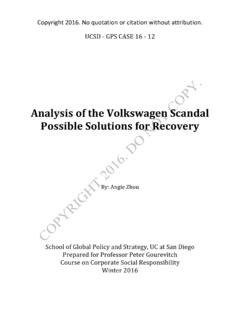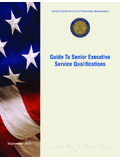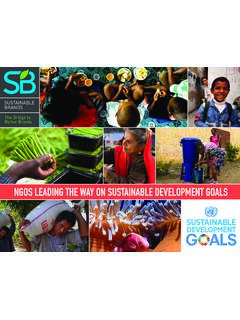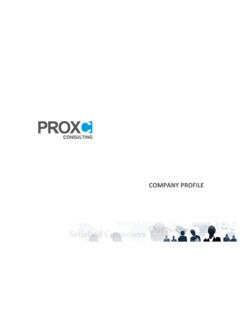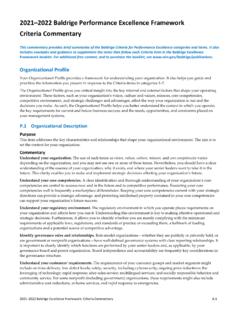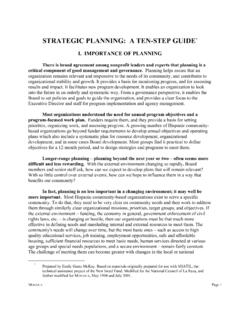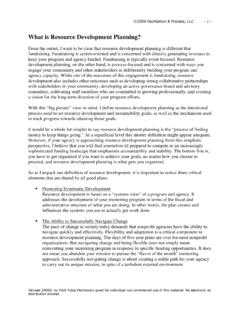Transcription of Baldrige Core Values and Concepts
1 Baldrige Core Values and Concepts These beliefs and behaviors are embedded in high-performing organizations. They are the foundation for integrating key performance and operational requirements within a results-oriented framework that creates a basis for action, feedback, and sustainability. The Baldrige Criteria are built on the following set of inter-related core Values and Concepts : Visionary leadership Customer-driven excellence Organizational and personal learning Valuing workforce members and partners Agility Focus on the future Managing for innovation Management by fact Societal responsibility Focus on results and creating value Systems perspective Visionary Leadership Your organization s senior leaders should set a vision for the organization, create a customer focus, demonstrate clear and visible organizational Values and ethics, and set high expectations for the workforce.
2 The vision, Values , and expectations should balance the needs of all your stakeholders. Your leaders should also ensure the creation of strategies, systems, and methods for achieving performance excellence, stimulating innovation, building knowledge and capabilities, and ensuring organizational sustainability. The Values and strategies leaders define should help guide all of your organization s activities and decisions. Senior leaders should inspire and encourage your entire workforce to contribute, to develop and learn, to be innovative, and to embrace meaningful change. Senior leaders should be responsible to your organization s governance body for their actions and performance, and the governance body should be responsible ultimately to all your stakeholders for your organization s and its senior leaders ethics, actions, and performance.
3 Senior leaders should serve as role models through their ethical behavior and their personal involvement in planning, providing a supportive environment for taking intelligent risks, communicating, coaching and motivating the workforce, developing future leaders, reviewing organizational performance, and recognizing workforce members. As role models, they can reinforce ethics, Values , and expectations while building leadership, commitment, and initiative throughout your organization. Customer-Driven Excellence Your customers are the ultimate judges of performance and quality. Thus, your organization must take into account all product and service features and characteristics and all modes of customer access and support that contribute value to your customers.
4 Such behavior leads to customer acquisition, satisfaction, preference, and loyalty; positive referrals; and, ultimately, the sustainability of your business. Customer-driven excellence has both current and future components: understanding today s customer desires and anticipating future customer desires and marketplace potential. Many factors may influence value and satisfaction over the course of your customers experience with your organization. These factors include your organization s customer relationship management, which helps build trust, confidence, and loyalty. Customer-driven excellence means much more than reducing defects and errors, merely meeting specifications, or reducing complaints.
5 Nevertheless, these factors contribute to your customers view of your organization and thus are also important parts of customer-driven excellence. In addition, your success in recovering from defects, service errors, and mistakes is crucial for retaining customers and engaging them for the long term. A customer-driven organization addresses not only the product and service characteristics that meet basic customer requirements but also those features and characteristics that differentiate the organization from competitors. This differentiation may be based on innovative offerings, combinations of product and service offerings, customized offerings, multiple access and outward communication mechanisms, rapid response, or special relationships.
6 Customer-driven excellence is thus a strategic concept. It is directed toward customer retention and loyalty, market share gain, and growth. It demands constant sensitivity to changing and emerging customer and market requirements and to the factors that drive customer engagement. It demands close attention to the voice of the customer. It demands anticipating changes in the marketplace. Therefore, customer-driven excellence demands a customer-focused culture and organizational agility. Organizational and Personal Learning Achieving the highest levels of organizational performance requires a well-executed approach to organizational and personal learning that includes sharing knowledge via systematic processes.
7 Organizational learning: Organizational learning includes both continuous improvement of existing approaches and significant change or innovation, leading to new goals, approaches, products, and markets. Learning needs to be embedded in the way your organization operates. This means that learning (1) is a regular part of daily work; (2) is practiced at the personal, work unit, and organizational levels; (3) results in solving problems at their source (root cause); (4) is focused on building and sharing knowledge throughout your organization; and (5) is driven by opportunities to effect significant, meaningful change and to innovate.
8 Sources for learning include employees and volunteers ideas, research and development, customers input, best-practice sharing, and benchmarking. Organizational learning can result in (1) enhanced value to customers through new and improved products and customer services; (2) the development of new business opportunities; (3) the development of new and improved processes or business models; (4) reduced errors, defects, waste, and related costs; (5) improved responsiveness and cycle time performance; (6) increased productivity and effectiveness in the use of all your resources; and (7) enhanced performance in fulfilling your organization s societal responsibilities.
9 Personal learning: The success of your workforce members including your leaders depends increasingly on their having opportunities to learn and to practice new skills. If your organization relies on volunteers, their personal learning is also important, and you should consider their learning and skill development. Organizations invest in personal learning through education, training, and other opportunities for continuing growth and development. It includes preparing people for future organizational core competencies. On-the-job training offers a cost-effective way to cross-train and to link training more closely to your organization s capacity needs and priorities.
10 Education and training programs may have multiple modes, including computer, Web-based, and distance learning. Personal learning can result in (1) a more engaged, satisfied, and versatile workforce that stays with your organization; (2) cross-functional learning for your organization; (3) the building of your organization s knowledge assets; and (4) an improved environment for innovation. Thus, learning is directed not only toward better products but also toward being more responsive, adaptive, innovative, and efficient giving your organization marketplace sustainability and performance advantages and engaging your workforce to increase satisfaction and the motivation to excel.
